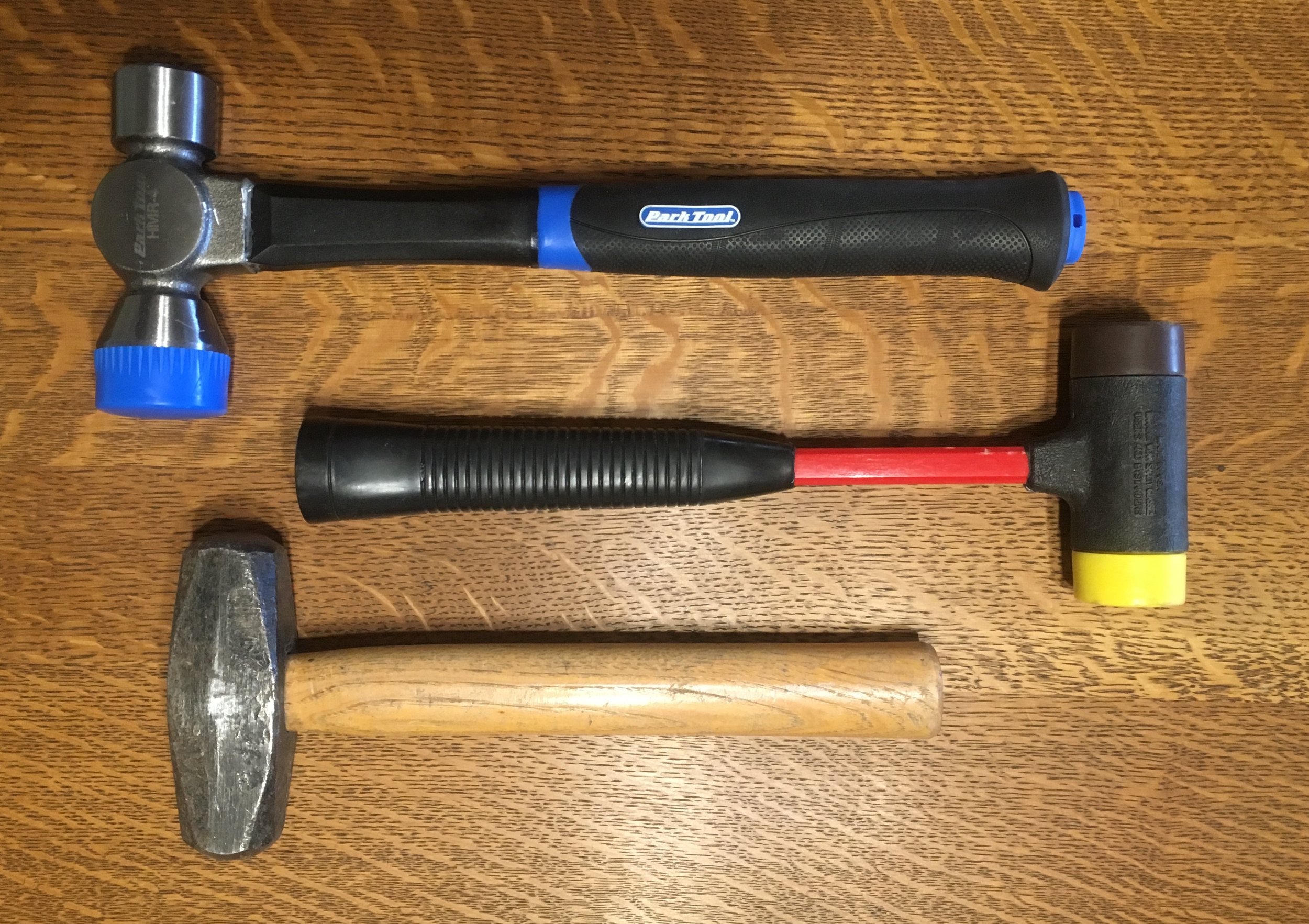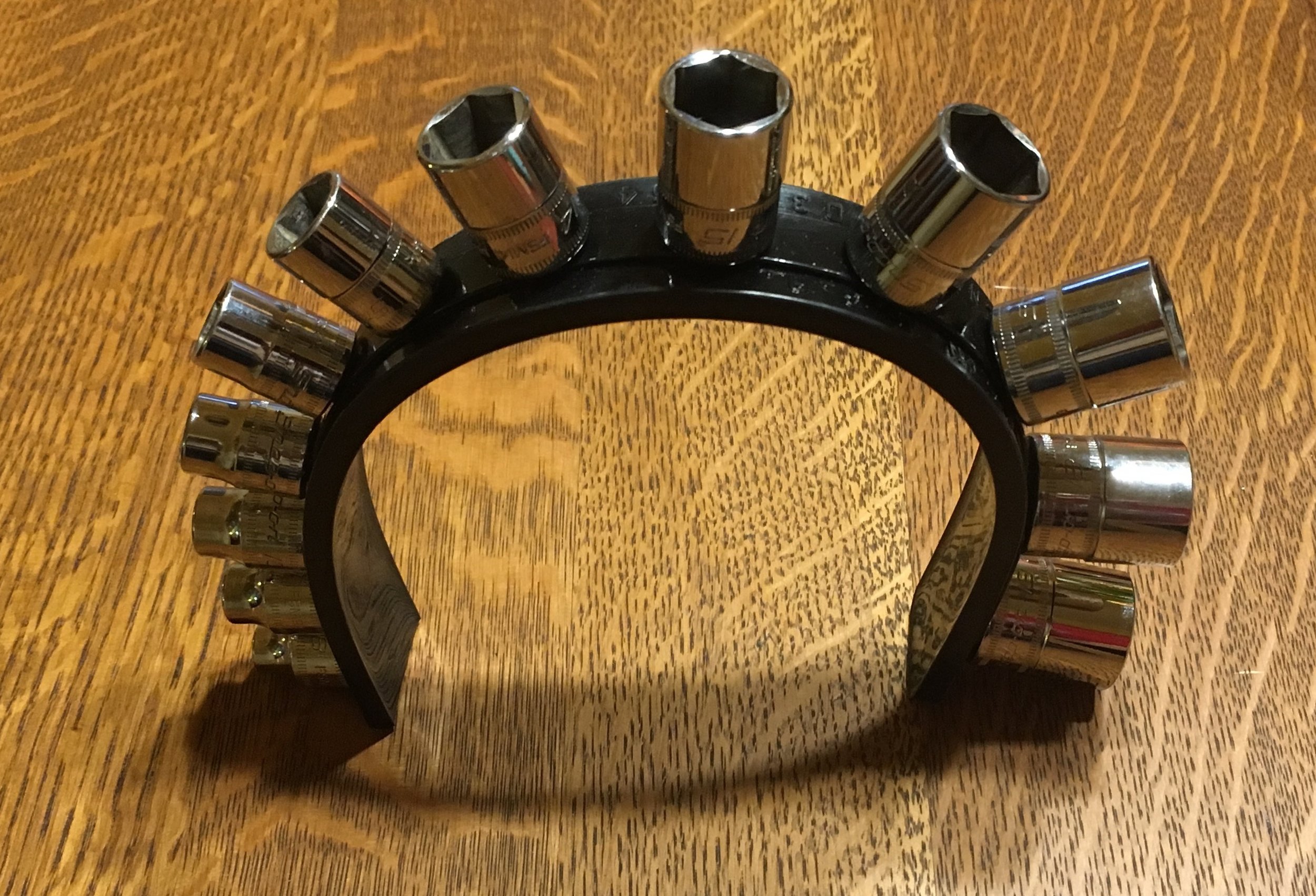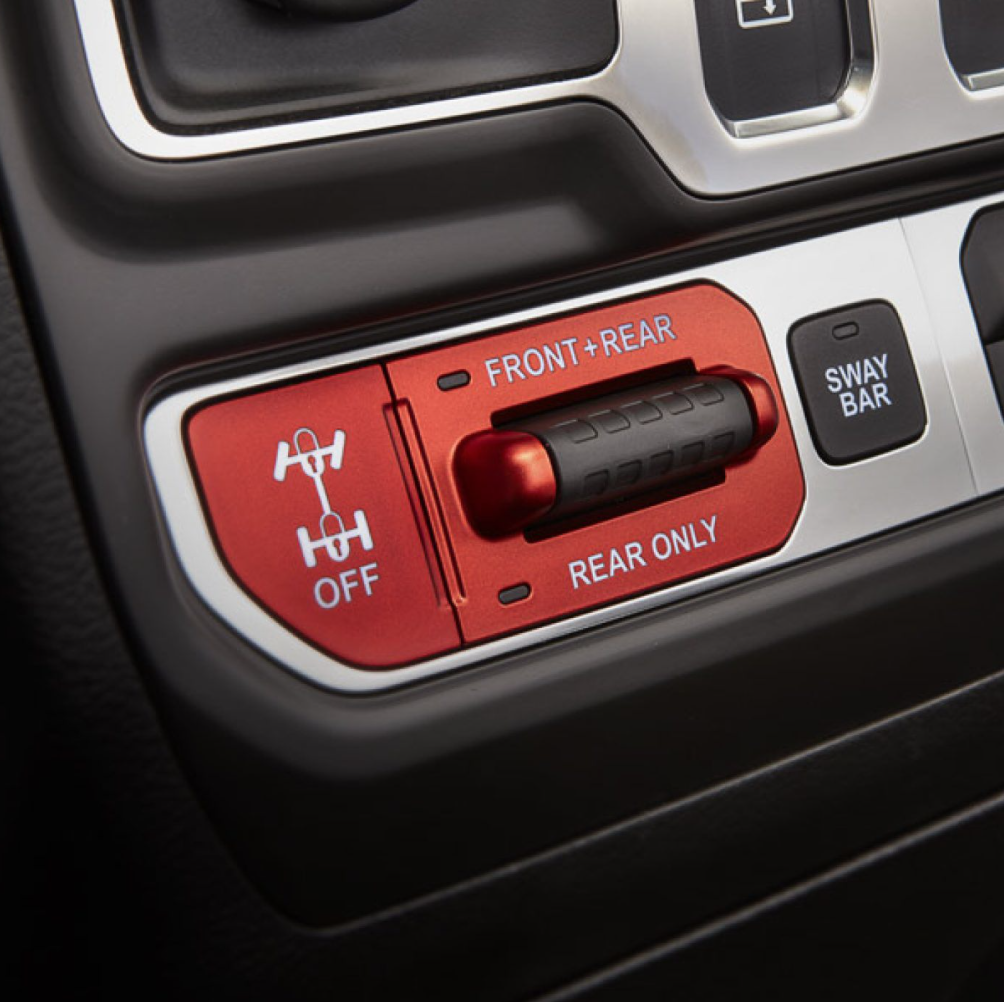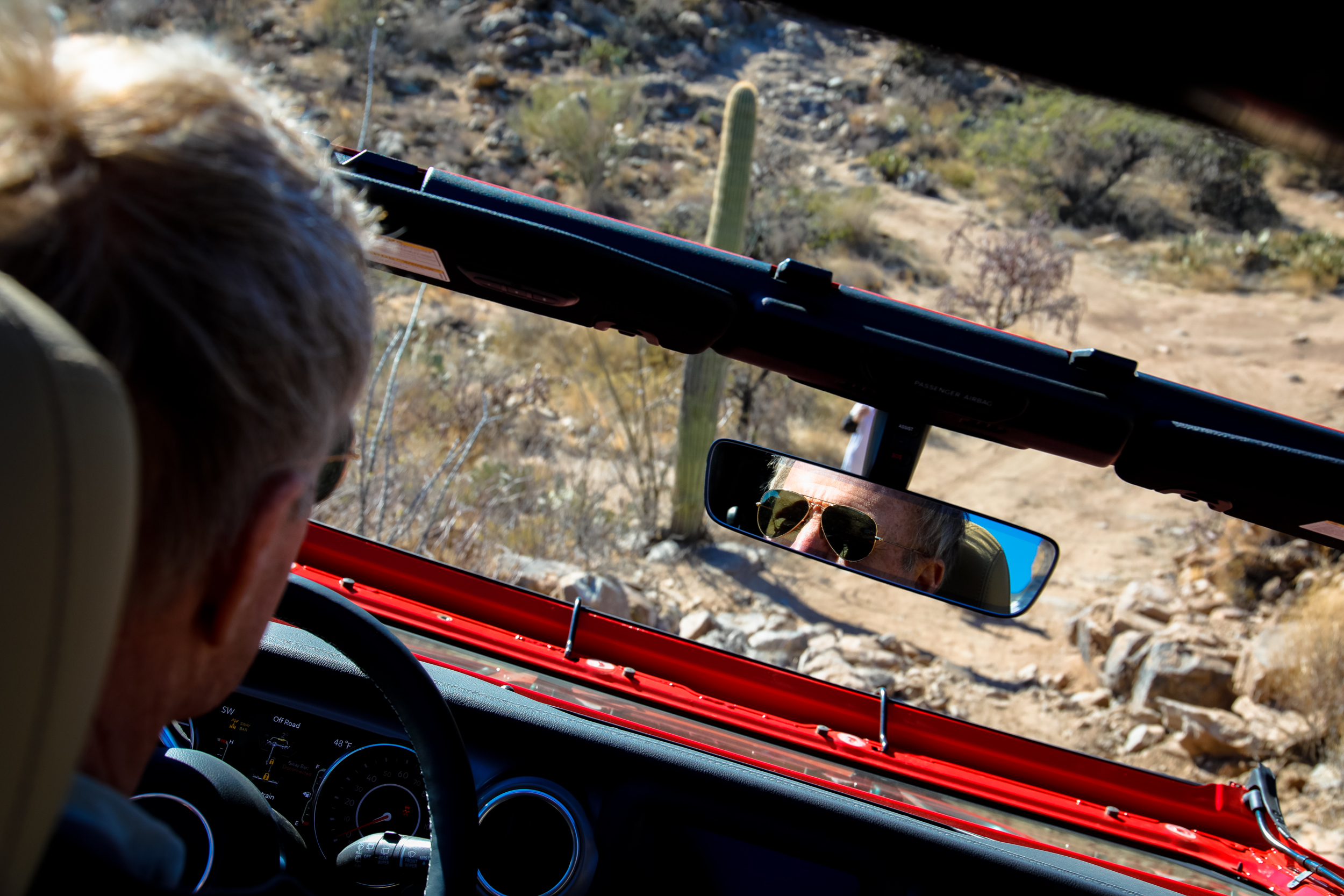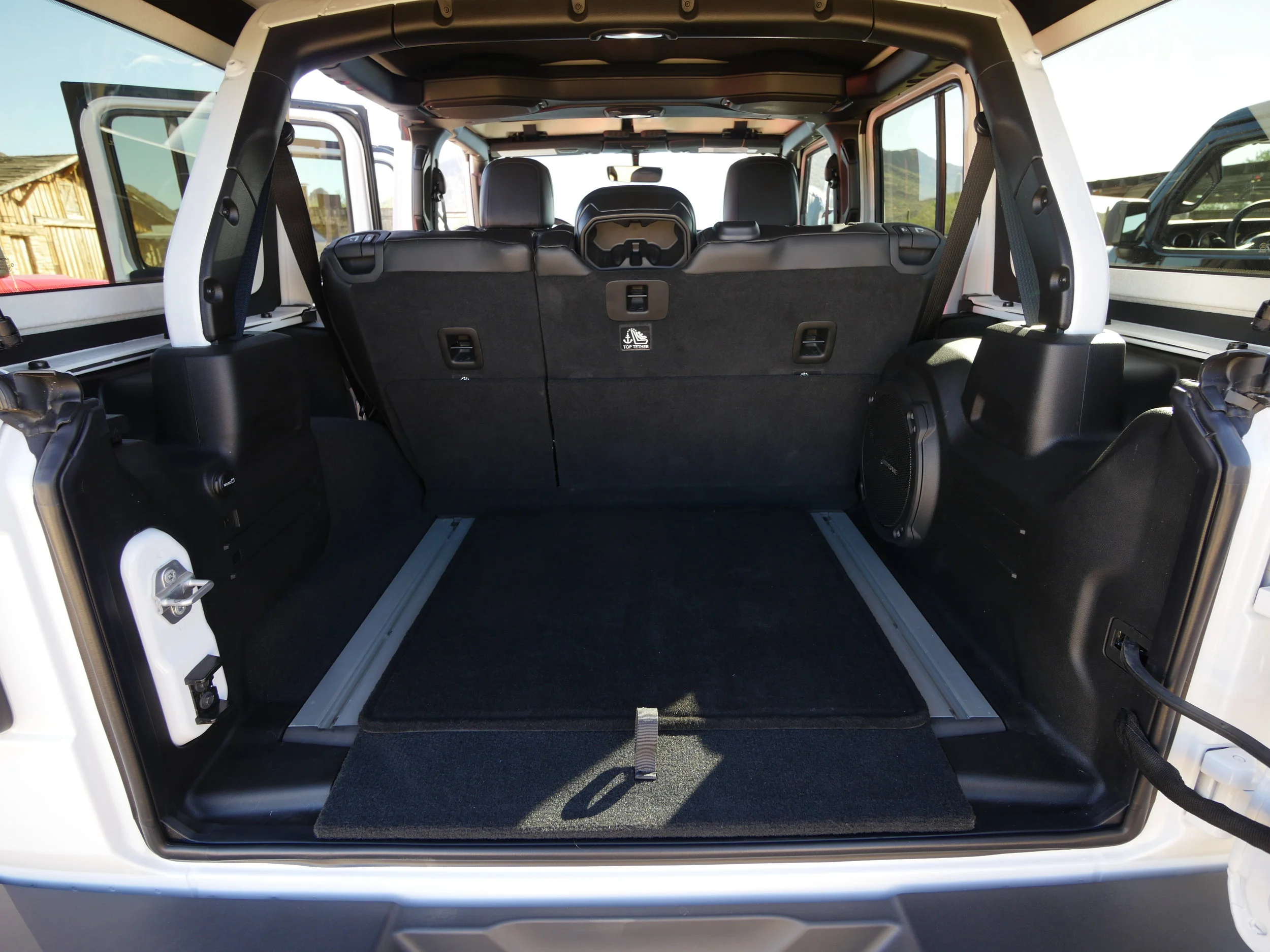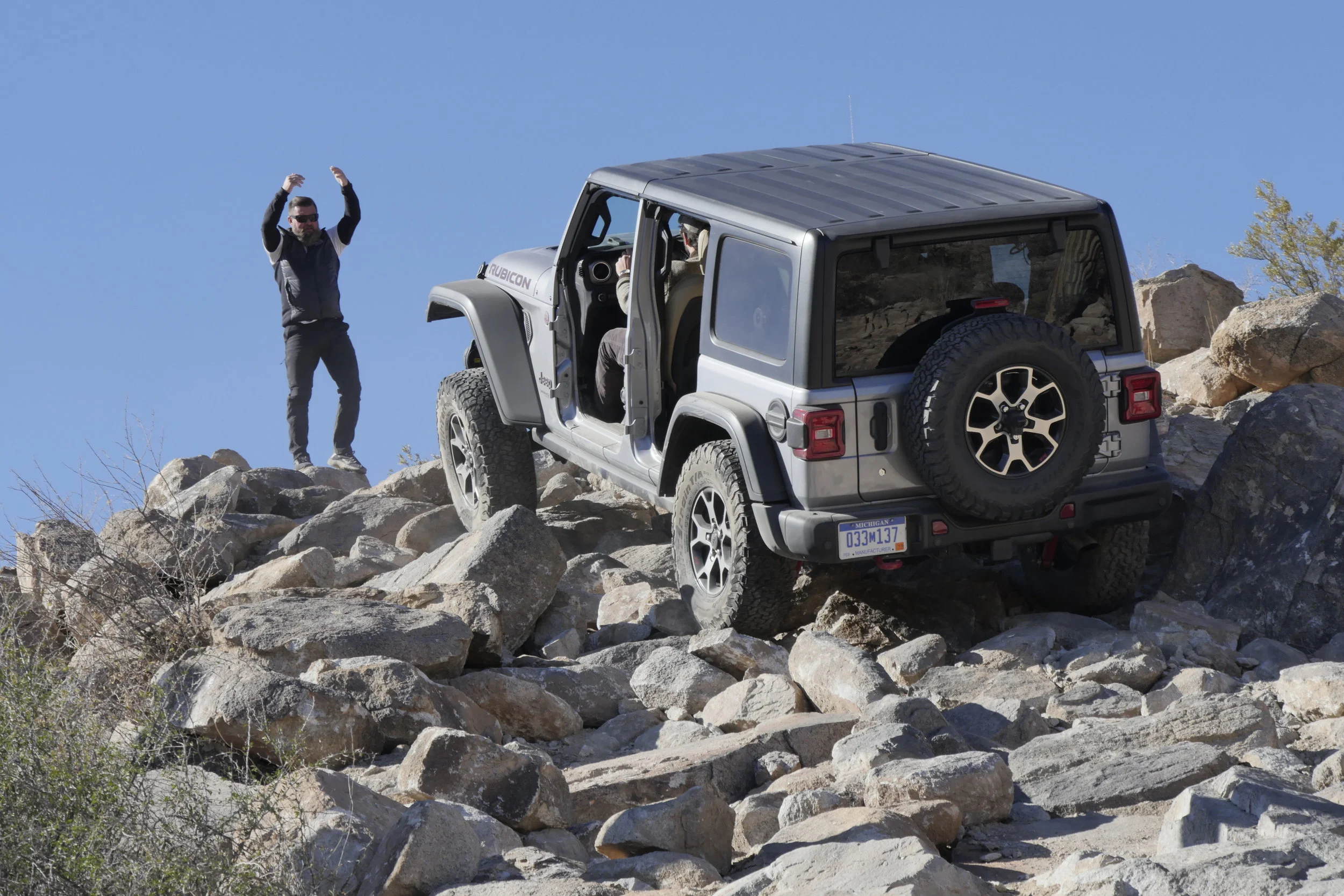Thankfully, with the 1997 TJ Chrysler returned to the round headlamps God intended for Wranglers—and, in a move that made this Toyota driver take notice, installed supple all-coil suspension (although this came more than a decade after Land Rover had done the same on the Defender). When the Rubicon Edition appeared in 2002, with Dana 44 axles, front and rear diff locks, and a 4:1 transfer case, owners of FJ40s (and Tacomas, and Pathfinders, and . . .) suddenly found pressing household chores that needed doing when asked out on trail runs by friends eager to show off their new ride.
Then came the JK and, critically, its 116-inch-wheelbase, four-door Unlimited version. In 2009-2010 I spent a year with a review Wrangler Rubicon Unlimited, during which I covered slightly over 35,000 completely trouble-free miles. I was less than impressed with the 3.8-liter V6, which offered neither a surfeit of power nor impressive fuel economy. The vehicle’s cargo capacity and GVWR were also underwhelming. Other than those gripes, I found the Wrangler to be . . . extraordinary. Here, at last, I thought and wrote, was an American vehicle fit to pit itself against the best expedition machines on the planet—the Land Rover Defender, the Land Cruiser 70-series Troop Carrier, the Mercedes G-Wagen. A couple of years ago I tested another Rubicon Unlimited, this time with the vastly improved 3.6-liter Pentastar engine and five-speed automatic transmission. In low range, with the front anti-roll bar (not “sway bar,” as the button incorrectly claims) disconnected, and both diffs locked, it would traverse terrain I would never have dreamed of tackling in the FJ40—or even in a late and lamented 80-series Land Cruiser with its own diff locks but inferior crawl ratio and no anti-roll bar disconnect. Around the same time, Tom Sheppard and I included the Jeep Wrangler Rubicon Unlimited in the fourth edition of the Vehicle-dependent Expedition Guide, in a four-vehicle comparison chart of what we considered the best choices for long-distance backcountry travel.
When FCA confirmed that it was working on a redesign of the JK Wrangler, those trolls who love to make others as unhappy as they are began flooding the forums with the worst sorts of fake news. It was “confirmed” that the new Wrangler would have independent front suspension, abandoning the sturdy solid axle. Then it was confidently announced that the new vehicle would have all-independent suspension, and furthermore that the separate, fully-boxed chassis would be swapped for unibody construction. It was by then actually known for a fact that the new Land Rover Defender, due out in 2018 or 2019, would follow the unibody/IFS/IRS template, so it took little for Wrangler fans to begin pre-emptively drinking heavily in dread anticipation.
Perhaps in an altruistic attempt to stem a rising tide of alcoholism among loyal customers, FCA initiated a studiously rationed trickle of leaked specifications, and photos of test mules “disguised” with little more than a few cardboard panels. Slowly, as these circulated, sighs of relief could be noted in those fan threads. Clearly the new Wrangler would still ride on solid axles. The body still sat on a separate chassis. The sun would still rise in the east.
Okay. But what about changes? Improvements? This was, after all, the first redesign of an iconic model in ten years, yet at a glance the vehicle looked virtually indistinguishable from its parent. The windshield appeared to be a little more raked, indicating improved aerodynamics and suggesting to the cognoscenti that the traditional fold-down capability (originally designed into the WWII Willys MB simply so it could be crated) was probably deleted. No big deal as the procedure in the JK was such a monumental pain no one did it anyway, even for fun-in-the-sun beach drives. The seven-slot grille was still in place—not even the leisure-suited and blow-dried designers responsible for the YJ’s headlamps had messed with that—but it, too, seemed to have gained some slope. Other than that it was difficult to detect many differences.


